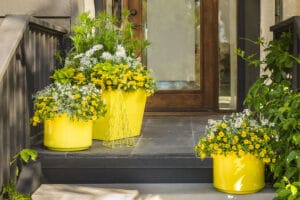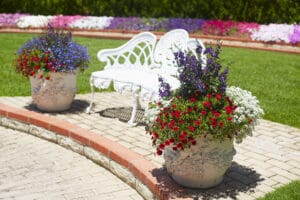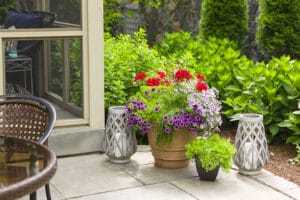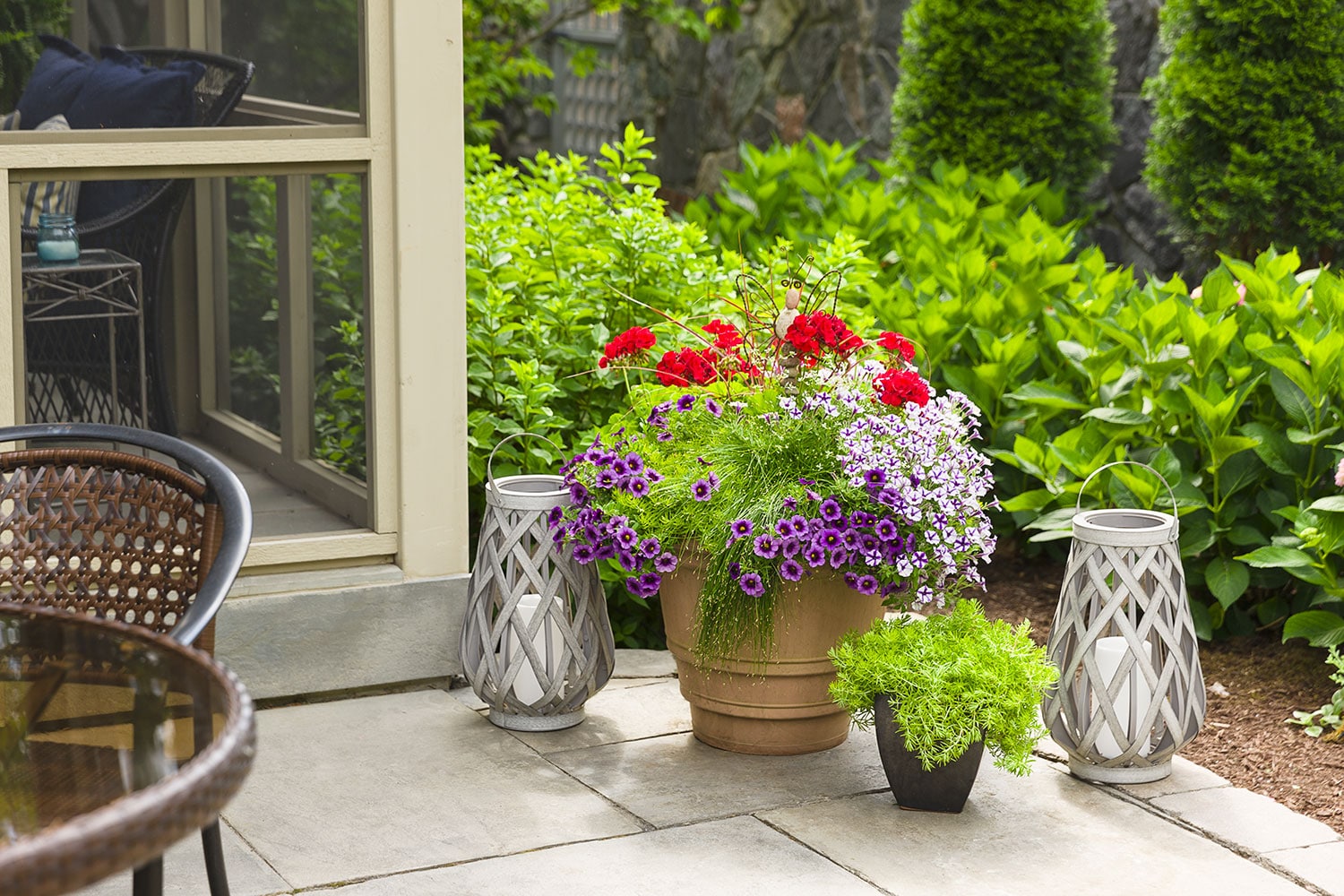When we know a few basic tips on flower planting, making flower planters, balcony and flower boxes becomes so easy. You’ll see! Once you know which pot dimension to choose; what type of soil to use, and what types of plants to match, you’ll be able to create wonderful floral arrangements to embellish your yard, patios, or balconies.
Pots, balcony boxes and exterior flower planters, what size to pick?
To start, you must know that bigger pots are easier to maintain than smaller ones because they require less frequent watering, something to consider if you have a busy lifestyle with very little time for the upkeep of balcony boxes and or flower planters. If your schedule allows it and you opt for a smaller pot, know that they should have a minimum of 20 cm in height and depth. Pot or planters of smaller dimensions will dry out quickly and your flowers will suffer.
Other important elements: whatever format you choose, your pots and planters will need drainage holes. If they don’t have any, make some, it’s essential!
Finally, if you are opting for black or dark pots avoid leaving them in the direct sunlight, they will overheat and they will hurt your plants.
Soil, compost, and fertilizer for your flower pots
To plant beautiful flowers outside, you will need a good quality soil; do not use gardening soil! The secret: a light soil where you’ll add a third of compost and an organic slow- release fertilizer (according to the dose on the product). Know that soil for flowers in pots, for balcony boxes, annual plants, or for indoor plants will work just fine.
Finally, to support the growth and flowering of your plants, you can add fertilizer dissolvable in water for watering, liquid algae for example, once a week
Which plants to choose for flower pots
Annuals, fine herbs, vegetables, tropical plants, perennials, and shrubs, you can plant anything in your flower boxes, balcony boxes, and flower planters! However, it is generally the annuals with constant flowering, the tropical plants, and textured perennials that will look best.
Here is how to choose your plants to get a balanced arrangement
1. Choose a center plant
The center plant is the star of your floral arrangement. It should be tall and colorful to structure your creation and give it personality. Plants with large unfolding like banana trees, cannas and taro plants, are generally the nicest center plants.
2. Choosing filling plants
Filling plants help to fill the space and enhance the look of your arrangement at all times. Choose plants with bushy growths and delicate flowers that will add texture. Annuals like geraniums, petunias and begonias are good choices that will create a nice contrast with your center plant or will complete it.
3. Choosing drooping plants
Drooping plants serve as a transition between the pot and the filling plants. It hides borders and prolongs the effect of color and abundance. For this role, think of sedum lemon coral, begonia Santa cruz sunset or calibrachoas.

Pro tip
To maximize results, opt for plants that have the name needs (water, sunlight, fertilizer, etc.)
Here are a few arrangement models to inspire you and put the techniques in images.
Planting: how to create your planters.
- Choose a pot or box or planter and drill drainage holes if it does not have any.
- Cover the drainage holes with screening material or newspaper to avoid losing soil when watering.
- Fill a third of the pot with compost (this will give an energy boost to your plants at mid-season), then add potting soil and humidify the mix.
- Place your plants on the soil to make sure that the collar (base of the plant) falls at 1,25 cm to the border of the pot. If need be, remove plants and add or remove soil.
- Use flower fertilizer according to the dose recommended on the product.
- Water and admire the results!
For those who wish to plant their flowers in a pot that contains soil year round, simply make up the difference with fresh soil. However if the old soil seems to compacted, add vermiculite or perlite which will improve aeration.
Maintenance of your pots, balcony boxes and exterior flower planters
All you have left to do is to water when the soil feels dry to the touch and add dissolvable fertilizer once a week. You can also remove wilted flowers if you wish, this will favor flowering.
Now that you know the secrets to successful flower potting, get started and create your own!







